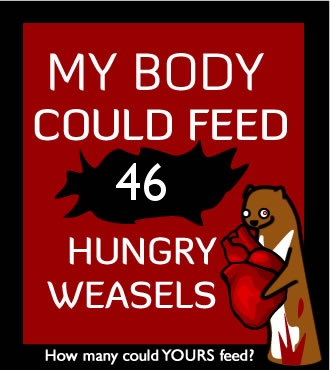Today we will chat about words; their history, their common usage, and their evolution within language. This is the science of etymology. My inspiration from this comes from my eldest, dearest darling of a child (insert whatever brand of personal sarcasm you prefer here), the young Mr. Think Science, Jr.
Each Monday TS Jr. comes home with a list of spelling/vocabulary words that he is meant to write several times, and then look up in the dictionary and define. Now this dictionary that we use at home is rather sentimental, as dictionaries go. It was my mother’s in college, and she gave it to me in high school. It is huge, and heavy, and literally fifty years old. The fact that it is huge and heavy causes some complaining when it must be dragged to the kitchen table, and I am secretly convinced that it gains at least twenty pounds in weight whenever touched by my dear child, or so you would think based upon how he carries on about having to drag this hulking beast from his room. Personally, I think this is ‘character building’, and I think he should have to carry this dictionary in his backpack to school, walking uphill both ways, like I did as a child…in the snow…in Arizona…but I digress. I may have to change my stance on this.
I recently learned the limitations of a 50-year old dictionary. For one, it does not have words in it that were invented in the modern age, such as ‘unfriend.’ You might recall from previous posts that this was The Oxford American Dictionary’s Word of the Year for 2009. The second limitation is really the same limitation, and that is that this dictionary was written in a different era.
At little background is needed about now - I have been harping on TS Jr. to choose the first definition given for each word, since that is usually the most common definition. He, of course, chooses whichever definition is the shortest. Therefore, many words on his list, prior to my scrutiny, have simple, but not inaccurate, definitions such as ‘noun.’
The word of the moment, whose true and detailed meaning we were anxiously waiting to reveal, was ‘chartreuse.’ And, in my 50-year-old dictionary, the definition for chartreuse is ‘a green or yellow aromatic liqueur’ (insert dramatic pause here to simulate new conundrum for mostly politically correct parental unit, aka me). I did not even know there was a liqueur called Chartreuse.
Darling TS Jr. subsequently won the battle that ensued about changing the definition to a more ‘school-appropriate’ definition, since, as he aptly pointed out, that WAS the first definition. So, that is the definition on his homework. I believe this is what they call ‘eating your words’ and TS Jr. skipped all the way to class, backpack sans giant dictionary, with the revelation that never again would he be held to the first definition of a word and might yet be able to get away with such concise and profoundly accurate definitions as ‘noun.’
Chartreuse is a French liqueur that contains 132 herbal extracts. Produced by monks, the alcohol gets its name from their home, the Grande Chartreuse monastery located in the Chartreuse Mountains. Chartreuse was originally thought to be an elixir of long life, stemming from a recipe obtained by the monks in 1605, and was 71% alcohol. The more modern Green and Yellow varieties, which tend more towards green and yellow coloration respectively, range from 55 to 40%. Sadly, the monks were expelled from France in 1903 when the French government attempted to take over both the monastery and the highly profitable Chartreuse production business. The monks simply moved to Spain and kept on making Chartreuse under a slightly different label. Attempts to reproduce the monk’s secret recipe failed miserably, the company went bankrupt, and the monks were allowed to return in 1927. The monastery was destroyed by a mudslide in 1935 and production was moved to nearby Voiron where it continues today. Thank you, Wikipedia. None of that information was in any of the dictionaries that I consulted.
The color that we refer to as ‘chartreuse’ comes from the color of the original alcohol, a very bright color between green and yellow. Today we might refer to this color as fluorescent green. The greenish color comes from the chlorophyll in those 132 herbs. And chlorophyll, does, in fact, fluoresce. Recall from your basic biology that chlorophyll is the green pigment that plants use to absorb light for photosynthesis, which is the process by which they produce new tissue and grow - you just knew I’d slip the science there somehow.
My note to the teacher along with the homework - Please don't suspend my child. I will buy a new dictionary this weekend.
Tuesday, January 19, 2010
What is the Meaning of This?
Labels:
chartreuse,
chlorophyll,
definitions,
kids,
liqueur,
school,
science
Subscribe to:
Post Comments (Atom)






1 comment:
Hi I actually live on the Chartreuse mountains in France. They are across the valley from the beginning of the French Alps (Belldonne)and are quite lovely! Anyway, just to let you know that the Monastary has been rebuilt many many times since the order was first created. It is still here and you can walk up to the gates and around the area. There is an amazing museum which shows examples of the monk's room and how they first created the liqueur. If you ever get a chance to take your kid to France, be sure to stop in Grenoble and go see the Monasty. Truely worth the visit! And you can buy some chartreause liquer and also chocolate with chartreuse liquer in it :) They are very proud of it. The factory where they currently produce it is also nearby.
Great blog. We love Science in our family as well!
Post a Comment